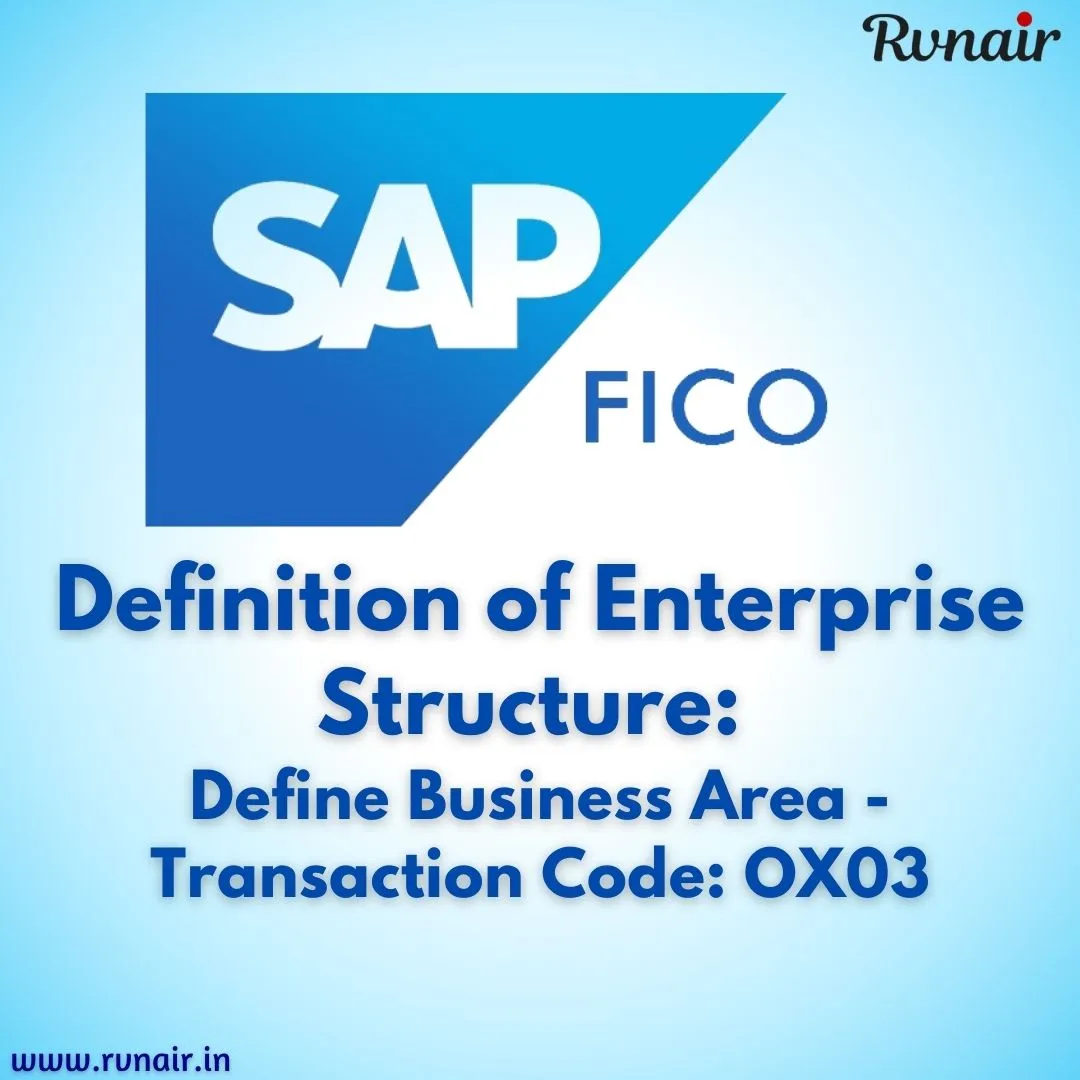
In SAP, the enterprise structure represents the organizational framework that defines how different business units and processes are structured and related. This structure includes various elements such as company, company code, plant, sales organization, and business area. A business area is a critical component in this structure, enabling detailed and segment-specific financial reporting. This article provides a comprehensive overview of the enterprise structure, the significance of business areas, and a step-by-step guide on how to define a business area using Transaction Code (TC) OX03 in SAP.
Understanding Enterprise Structure in SAP
The enterprise structure in SAP is a hierarchy that organizes different business units and processes. Key elements include:
- Client: The highest level in the SAP system, representing the entire enterprise.
- Company: A legal entity within the client for which consolidated financial statements are created.
- Company Code: The smallest organizational unit for which a complete set of accounts can be maintained.
- Plant: A location where production activities occur.
- Storage Location: A subdivision within a plant where inventory is stored.
- Sales Organization: Responsible for the sale and distribution of goods and services.
- Business Area: An organizational unit within a company code that represents a separate area of operations or responsibilities.
The Role of Business Areas
Business areas in SAP are used for internal reporting purposes. They allow organizations to segment their financial transactions and reports by distinct areas of operation, which can cross company codes. This segmentation helps in evaluating the performance of different business segments and supports more detailed financial analysis and reporting.
Key Features of Business Areas
- Segment Reporting: Enables detailed financial reporting by different segments of the business.
- Cross-Company Code Reporting: Allows for reporting across different company codes within the same business area.
- Internal Management: Facilitates internal management and decision-making by providing financial insights specific to business areas.
- Profit Center Accounting: Supports profit center accounting by linking profit centers with business areas for detailed profitability analysis.
Creating a Business Area Using Transaction Code OX03
Defining a business area in SAP is a vital step in setting up the enterprise structure. The transaction code OX03 is used to create and manage business areas. Here is a detailed guide on how to define a business area using OX03:
Step 1: Accessing the Transaction
- Open the SAP Easy Access Menu.
- Navigate to SAP Menu > Tools > Customizing > IMG > Execute Project (SPRO).
- Alternatively, directly enter the transaction code OX03 in the command field and press Enter.
Step 2: Display IMG Structure
- In the Display IMG (Implementation Guide) screen, navigate to Enterprise Structure > Definition > Financial Accounting > Define Business Area.
- Click on the Execute icon to proceed to the business area configuration screen.
Step 3: Define New Business Area
- In the Define Business Area screen, click on the New Entries button.
- A screen will appear where you can input the details for the new business area.
Step 4: Enter Business Area Details
- Business Area: Enter a unique identifier for the business area. This can be an alphanumeric code.
- Description: Enter a descriptive name for the business area to easily identify its purpose and scope.
Step 5: Save the Business Area
- After entering the required details, click the Save button.
- A prompt will appear asking you to confirm the changes. Click Yes to save the new business area.
- The system will save the new business area and display a confirmation message.
Importance of Defining a Business Area
Defining a business area is crucial for several reasons:
- Segment-Specific Reporting: Enables detailed financial reporting and analysis for different segments of the business.
- Performance Evaluation: Helps in evaluating the performance of different business areas, supporting better management decisions.
- Data Integration: Ensures that financial data is accurately segmented and integrated across the enterprise.
- Regulatory Compliance: Supports compliance with internal and external reporting requirements by providing detailed financial insights.
- Operational Efficiency: Enhances operational efficiency by providing clear financial visibility into different areas of the business.
Best Practices for Defining a Business Area
When defining a business area in SAP, it is important to follow best practices to ensure accuracy and consistency:
- Unique Identification: Ensure that each business area has a unique identifier to avoid conflicts.
- Descriptive Names: Use descriptive names for business areas to clearly indicate their purpose and scope.
- Accurate Information: Verify that all information entered is accurate and up-to-date.
- Standard Naming Conventions: Follow standard naming conventions for consistency and easy identification.
- Regular Reviews: Regularly review and update business areas to reflect any organizational changes.
- Documentation: Maintain detailed documentation of the business area creation process for future reference and audits.
Defining a business area using transaction code OX03 is a fundamental step in setting up the enterprise structure in SAP. Business areas enable detailed and segment-specific financial reporting, helping organizations evaluate the performance of different business segments and support internal management decisions. By following the steps outlined in this guide and adhering to best practices, organizations can establish a robust and scalable enterprise structure in SAP, facilitating accurate financial reporting and efficient business operations. This crucial configuration step not only enhances financial transparency but also enables businesses to manage their financial data more effectively.
